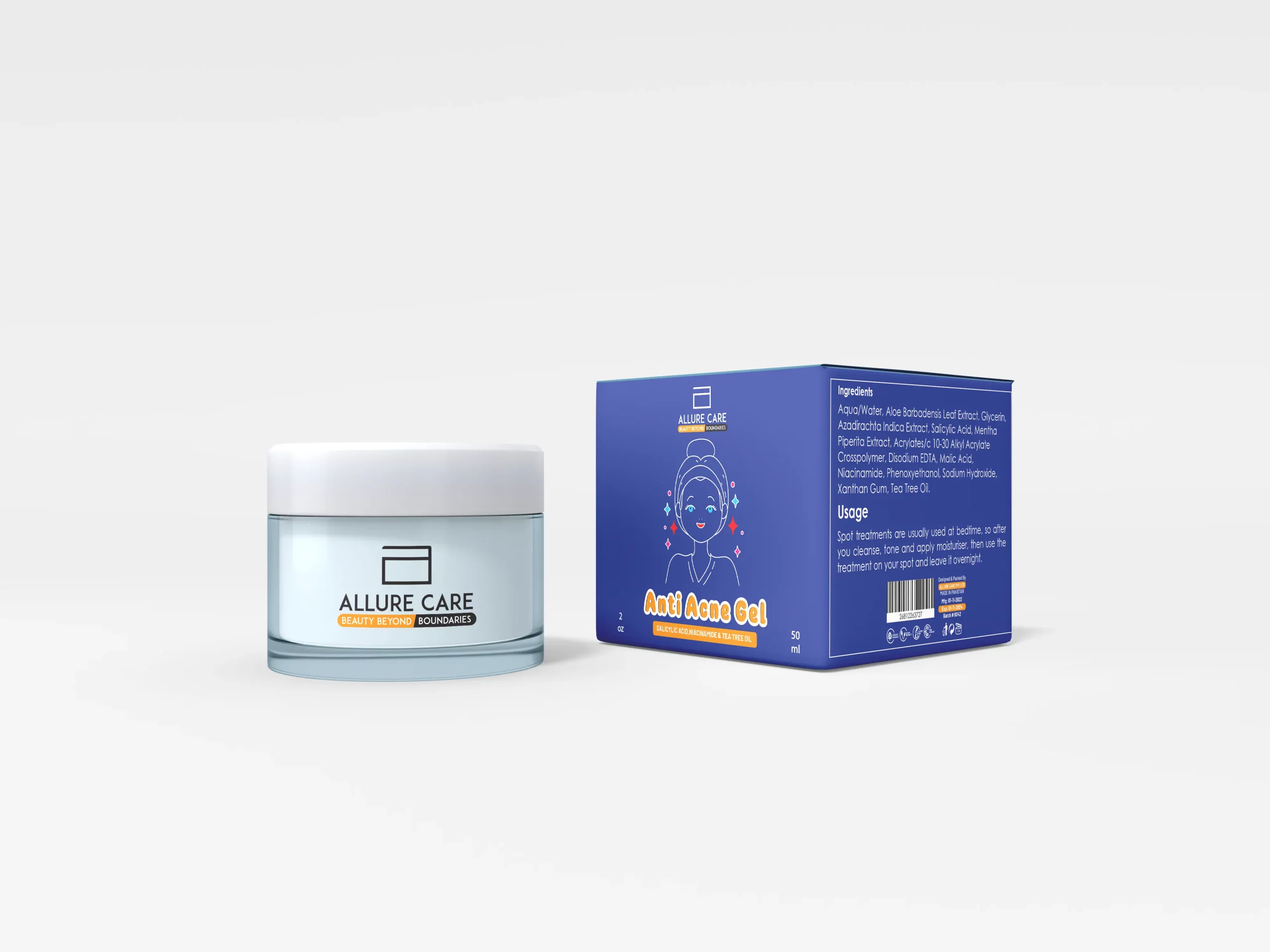Anti-acne gels are topical products designed to help manage and treat acne. They generally contain active constituents that target the factors contributing to acne, similar to redundant oil painting products, congested pores, and inflammation.
Inflammation
Then are some common constituents set up inanti-acne gels and their functions Benzoyl Peroxide This component has antibacterial parcels and helps to reduce the number of acne-causing bacteria on the skin. It also helps to unclog pores and reduce inflammation.
Salicylic Acid
This beta-hydroxy acid exfoliates the skin, helping to remove dead skin cells and unclog pores. It’s particularly effective for treating papules and blackheads.
Retinoids
Retinoids( Retinol, Tretinoin, Adapalene) Retinoids are derivations of vitamin A and help promote skin cell development. They can help the conformation of new acne lesions and ameliorate overall skin texture. Clindamycin or Erythromycin These are antibiotics that can be included in some phrasings to reduce the growth of bacteria on the skin.
Niacinamide
Niacinamide Also known as vitamin B3, niacinamide has anti-inflammatory parcels and can help to reduce greenishness and vexation associated with acne.
Tea Tree Oil
Tea Tree Oil A natural component with antimicrobial parcels, tea tree oil painting is occasionally used in anti-acne products. It’s important to note that some people may be sensitive to the high attention of tea tree oil painting, so it’s frequently adulterated in phrasings. When using anti-acne gels, it’s essential to follow the instructions handed by the product and, if applicable, your healthcare provider.
Usage
Then are some general tips for using anti-acne gels Start with a clean face Wash your face with a gentle cleaner before applying the gel. Apply a small quantum Use a pea-sized quantum or as directed by the product instructions. Applying too much can lead to inordinate blankness or vexation. Use sunscreen Some acne specifics, especially retinoids, can make the skin more sensitive to sun. It’s pivotal to use sunscreen during the day to cover your skin. Harmonious thickness is crucial when using anti-acne gels. Results may take time, so it’s important to use the product regularly as directed. still, it’s judicious to consult with a dermatologist who can give individualized recommendations grounded on your skin type and the inflexibility of your acne, If you have a patient or severe acne.

Ingredients
Aqua/Water, Aloe Barbadensis Leaf Extract, Glycerin, Azadirachta Indica Extract, Salicylic Acid, Mentha Piperita Extract, Acrylates/c 10-30 Alkyl Acrylate Crosspolymer, Disodium EDTA, Malic Acid, Niacinamide, Phenoxyethanol. Sodium Hydroxide, Xanthan Gum, Tea Tree Oil, Lactic Acid.
Benefits
Acne clear gel helps in removing acne scars. It has antibacterial and anti-inflammatory properties that help in reducing all types of acne and pimple-related problems. It removes acne scars and provides flawless skin rapidly.
Reduction of Inflammation:
Many anti-acne gels contain ingredients such as salicylic acid or benzoyl peroxide, which can help reduce inflammation associated with acne. This can lead to a decrease in redness and swelling.
Unclogging Pores:
Ingredients like salicylic acid are known for their ability to penetrate into the pores and help unclog them. This can prevent the formation of new acne lesions by removing excess oil, dead skin cells, and other debris.
Bacterial Control:
Benzoyl peroxide is an ingredient commonly found in anti-acne gels that has antibacterial properties. It can help kill the bacteria (Propionibacterium acnes) that contribute to the development of acne.
Exfoliation:
Some anti-acne gels contain exfoliating agents, such as alpha hydroxy acids (AHAs) or beta hydroxy acids (BHAs), which can help remove dead skin cells, keeping pores clear and preventing the formation of new acne.
Preventing New Breakouts:
By addressing the root causes of acne, anti-acne gels can help prevent new breakouts from occurring.
Oil Control:
Many anti-acne gels are formulated to control excess oil production, which can be a contributing factor to acne. By regulating oil levels, these gels can help prevent pore blockages.
Promoting Healing:
Ingredients like aloe vera or chamomile extract, often included in anti-acne gels, can have soothing and healing properties. This can help reduce irritation and promote the healing of existing acne lesions.
Non-comedogenic Formulas:
Good quality anti-acne gels are often formulated to be non-comedogenic, meaning they won’t clog pores further and are suitable for acne-prone skin.
Convenience and Ease of Use:
Anti-acne gels are typically easy to incorporate into a skincare routine. They are available over-the-counter and may come in various formulations, including gels, creams, or spot treatments.
Niacinamide:
Helps calm the skin
Non-comedogenic Oil
Fragrance & Paraben Free
Salicylic acid is a beneficial ingredient for clearing acne and preventing new breakouts, and a product that provides gentle exfoliation can help minimize the appearance of pores. An oil-free. non-drying acne gel with alpha- and beta-hydroxy acids (AHA and BHA) can help the skin look smooth and radiant without compromising the skin’s natural protective barrier or drying out skin,

